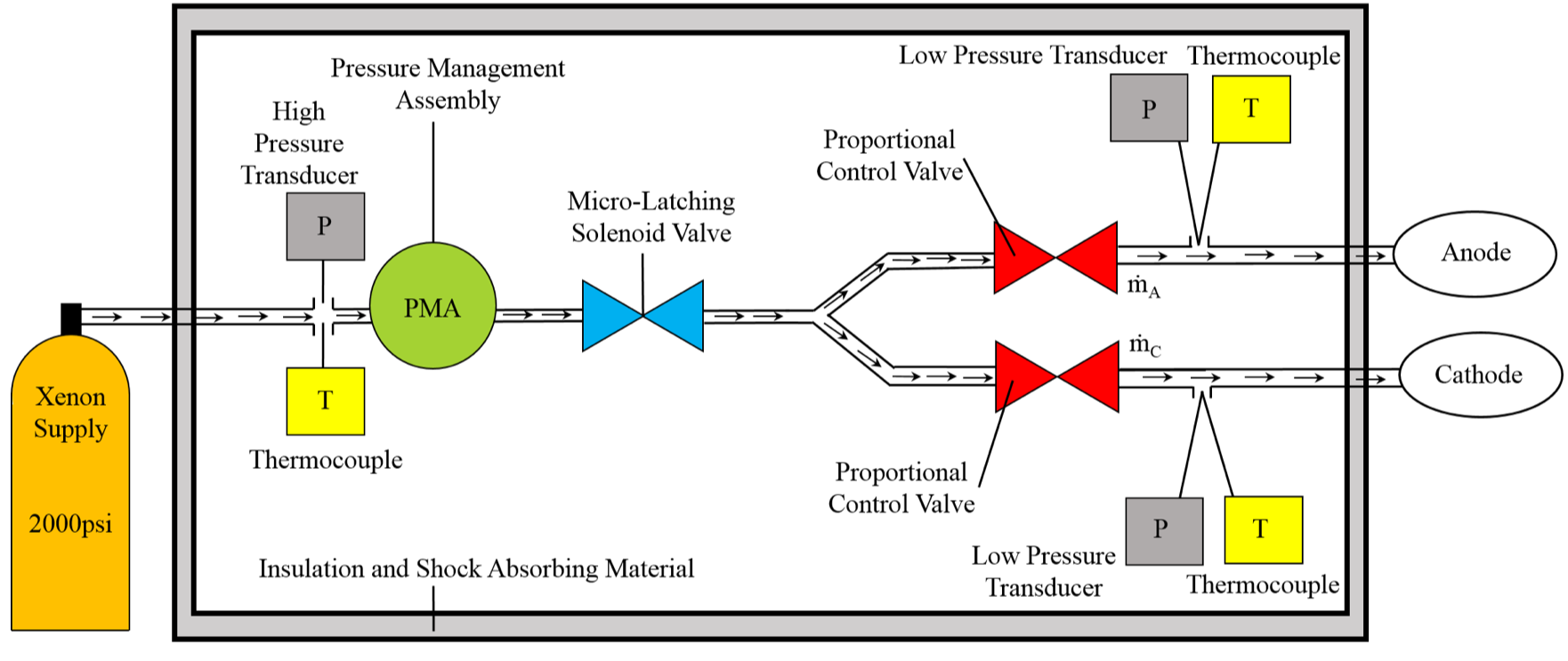Psyche Mission: Xenon Flow Controller
The Xenon Flow Controller project
Read More

NASA Psyche is a space exploration mission that will study an asteroid orbiting the sun between Mars and Jupiter. The Psyche spacecraft will collect data from this asteroid during a series of orbits. The spacecraft will reach and
orbit the asteroid using a Hall-Effect Thruster. Hall-Effect Thrusters (HETs) generate thrust by utilizing ionized xenon gas. The thrust depends, in part, on the Xenon gas supplied to both the anode and cathode of the Hall-Effect Thruster.
Therefore, a Xenon Flow Controller (XFC) is needed to precisely control Xenon flow rates entering the Hall-Effect Thruster. The primary goal of this capstone project is to design, build, and test a Xenon Flow Controller (XFC) prototype
that would supply a spacecraft with the fuel necessary to complete a similar mission. High-pressure containers aboard the spacecraft are used to store the xenon. The first stage of our XFC design will regulate the pressure down to
workable levels. Our design includes a pressure management assembly used to achieve pressure control. Our XFC has two outlets connected to the anode and cathode of the HET. Two proportional flow control valves precisely control the
mass flow entering the anode and cathode. Sensors record flow properties at two important locations within the XFC. Our XFC design uses the flow diagnostic data to correct any deviation from target flow rates. On a spacecraft,
solar panels would be used to supply the XFC with power at a standard value, which would then be regulated to meet the needs of the controller. Our XFC prototype housing will also incorporate insulation layers to protect from the environment
of space.

Shown is the final concept design diagram developed by our team over the course of Fall 2018. This design is capable of pressure regulation, mass flow control, and operates based off a continuous feedback loop.
Our Xenon Flow Controller module is designed to meet each target as defined by our techincal mentors at NASA Glenn Research Center
The final Xenon Flow Controller prototype delivers flow rates between 3 mg/s and 20 mg/s.
Each internal component is powered using a portion of the 28 VDC, which is what would be supplied to a XFC by the Psyche Spacecraft's solar array.
The XFC prototype accepts an inlet pressure of 2,000 psia and regulates the gas down to 30 psia which is maintained internally throughout the apparatus.
The XFC module is controlled via a continuous feedback loop driven by our PID controller. All response times are provided in under 5 miliseconds.
The XFC prototype must withstand operation conditions and the vacuum of outer-space. The prototype is composed of high-performance material. The prototype can withstand sinusoidal vibrations of 13g peak between 5-100 Hz as well as random vibrations at 14 g rms.
The design will be capable of maintaining a cathode flow fraction between 5-20%.
The Xenon Flow Controller capstone project is sponsored by the NASA Psyche Student Collaborations Program

Arizona State University
School of Earth and Space Exploration

Psyche Mission Principal Investigator
Arizona State University
Director of the School of Earth and Space Exploration

FAMU-FSU College of Engineering
Faculty Advisor


Meet the FAMU-FSU team behind the Psyche Mission: Xenon Flow Controller Capstone Project